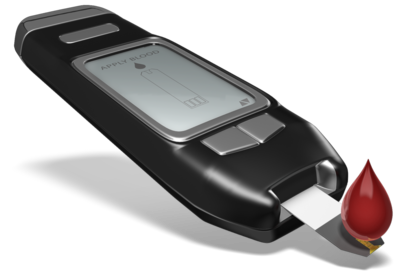10th March 2019, Dr Chee L Khoo
It makes sense that patients with type 1 diabetes (T1D) on insulin pump be fitted with continuous glucose monitoring (CGM) which facilitate insulin titration. It’s even better if the CGM sensor directly “talks” to the pump and adjust the basal insulin rate with an algorithm based on the blood glucose levels. There are ample studies demonstrating better glycaemic control when you use both pump and CGM for management of patients with T1D. There are also increasing number of studies which demonstrate similar improvements in patients with type 2 diabetes (T2D).
From 1st March 2019, CGM devices are now available FREE to patients with T1D subject to very many (silly) restrictions:
- Children and young people aged under 21 years with type 1 diabetes
- Children and young people under 21 years with conditions very similar to type 1 diabetes who require insulin
- People with type 1 diabetes aged 21 years or older who have valid concessional status and have a high clinical need
- Women with type 1 diabetes who are actively planning pregnancy, pregnant, or immediately post-pregnancy
Most of us probably don’t look after too many young patients with T1D in general practice, so this new scheme is unlikely to affect our work flow. However, we may have many patients like those listed under (3) above. Most of these are our older patients with T1D and on multi-dose insulin injections and can benefit from CGM. We may also have a few patients with T1D who presented to emergency department (ED) after hours and the weekend with a major hypoglycaemic episode. The ED staff may not be familiar with the scheme.
To qualify under the new scheme, the patient with T1D (who is naturally on insulin) need to have a high clinical need for CGM. High clinical need is defined as:
- a history of at least one episode of severe hypoglycaemia within the last 12 months, with evidence of significant cognitive impairment requiring external third-party assistance for recovery; and
- an assessment of significantly impaired awareness of hypoglycaemia using the Clarke Survey – with a score of four (4) or above indicating significantly impaired awareness of hypoglycaemia.
And patient required the assistance of an external third-party for recovery, involving either:
- attendance by an ambulance; or
- hospital admission.
Then they are eligible for a CGM device. This is what you have to do:
Step 1
Download and fill in the CGM Eligibility Assessment form. Forward (send, email or fax) to NDSS Australia (details on the form). The following device are approved for this scheme:
- Dexcom G4 Platinum
- Medtronic MiniLink
- Medtronic Guardian 2 Link
- Dexcom G5 Mobile
- Medtronic Guardian Connect
The first 4 devices are for use with insulin pumps while the last 2 can be used as stand alone CGM devices. With the stand-alone devices, glucose levels are done every 5 mins and transmitted to a smart phone via Bluetooth.
Step 2
Patients who meets the eligibility criteria and are already using an approved device, can order their devices via the NDSS. These are dispensed from the pharmacies just like existing glucometer strips.
For patients who meets the eligibility criteria but who have not used an approved device before, a starter kit (with the device) will be sent to the certifying health professional (HP). It is assumed that the HP is familiar with how to apply and use the device and can get the patient started on the new device. Thereafter, further devices can be obtained from the pharmacy.
For patients who meets the eligibility criteria and is already using an approved device but would like to be on a different device, the CGM Update or Termination form needs to be submitted. A starter kit (with the device) will be sent to the certifying health professional.
Unfortunately, the popular Freestyle Libre flash glucose monitoring system did not make the approved devices list but “negotiations with the product sponsor are ongoing and further information will be provided once negotiations are complete.”
Sadly, access to these devices in older patients with T1D is limited to concessional card holders only. These are specifiied as:
- Commonwealth Seniors Health Card (as issued by DHS* or DVA**)
- Commonwealth Pensioner Concession Card (as issued by DHS or DVA)
- Commonwealth Health Care Card (as issued by DHS or DVA)
- DVA Gold Card
- DVA White Card
- Identifies as Aboriginal and/or Torres Strait Islander person
It is somewhat disappointing to see that patients with T2D is not eligible for the scheme as studies have demonstrated that in patients with T2D on multi-dose insulin (i.e. basal bolus) do frequently have significant hypoglycaemia. CGM in these patients as been shown to reduce hypoglycaemia and improve glycaemic control.
A recent large scale study evaluated the link between severe hypoglycaemia and cognitive decline, brain volumes and dementia in adults with type 2 diabetes. Among 2001 patients with diabetes, a history of severe hypoglycaemia was associated with dementia and smaller brain volume on brain MRI (1). Hypoglycaemia was also associated with incident dementia.
Hypoglycaemia is often hidden and patients don’t usually tell their doctors about their hypoglycaemia. A high index of suspicion is required. Further, patients with frequent hypos may not be aware of their hypoglycaemia especially, if they occur during the night. Major hypoglycaemia is also known to be associated with increased CV mortality. Hypoglycaemia leads to poorer adherence to tight glycaemic control. Hypoglycaemia also leads to changes to patient and their families’ life.
If only more patients on insulin have access to CGM without having all of us jumping through ever increasing number of hoops!
Reference:
Lee, A.K., Rawlings, A.M., Lee, C.J. et al. Severe hypoglycaemia, mild cognitive impairment, dementia and brain volumes in older adults with type 2 diabetes: the Atherosclerosis Risk in Communities (ARIC) cohort study. Diabetologia (2018). https://doi.org/10.1007/s00125-018-4668-1
